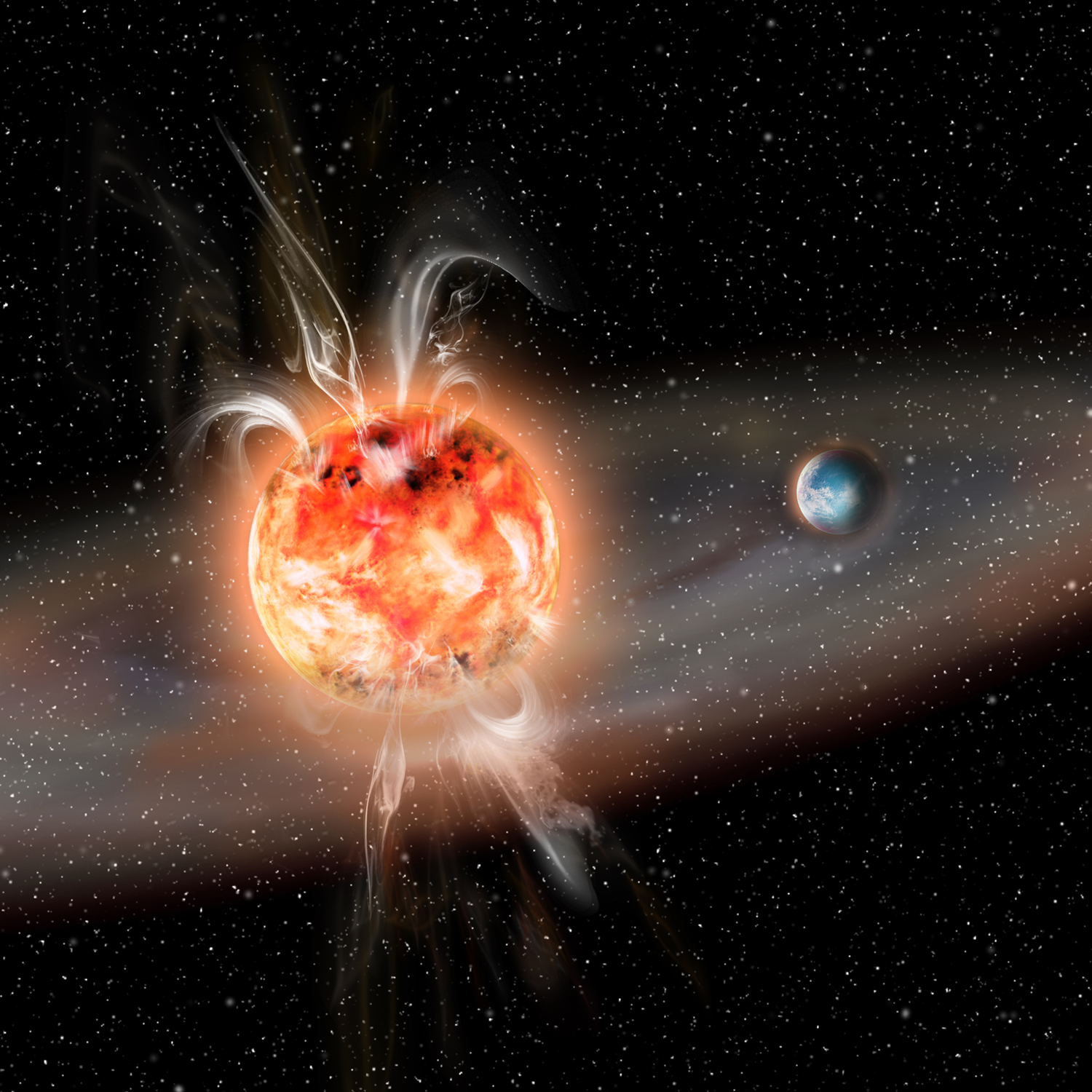Superflares may not be that dangerous for planets
In “Proxima Rising,” the planet Proxima b and its inhabitants become victims of an eruption of the central red dwarf, a superflares. Astronomers have long suspected that such radiation bursts can permanently damage the atmospheres – and thus the habitability – of exoplanets. A new study published Aug. 5 in the Monthly Notices of the Royal Astronomical Society may now give the all-clear.
Using optical observations from the Transiting Exoplanet Survey Satellite – TESS for short – the team, led by astronomers from the Leibniz Institute for Astrophysics Potsdam, studied large superflares on red dwarfs, a class of young, small stars that have a lower temperature and mass than our own Sun. Many exoplanets have already been found around these types of stars. A persistent question in exoplanet research has been whether these exoplanets are habitable, since red dwarfs are more active than our Sun and flare up much more frequently and intensely.
The team developed a method to determine the location on the surface of the stars where the flares occur. The team did this by analyzing so-called “whitelight flares” on rapidly rotating red dwarf stars. These types of flares last long enough that their brightness, as observed by TESS, varies as they swing in and out on the star’s surface. “Because we can’t see the surface of these stars, it has been difficult to impossible to determine the latitudes of hot flares and cool spots,” says co-author James Davenport of the University of Washington.
The team found rotating flares by processing the light curves of more than 3,000 red dwarf stars with TESS. Among those stars, four were found to have flares large enough for the new method. The team then used the precise shape of each star’s light curve to determine the latitude of the flare region, and found that all four flare events occurred above about 55 degrees latitude, which is much closer to the pole than flare events and spots on the surface of our Sun that normally occur below 30 degrees latitude. These results are significant even with only four flares: if the flares were evenly distributed over the surface of the star, the probability of finding four flares in a row at such high latitudes would be about 1 in 1,000.
This has implications for models of the magnetic fields of stars and for the habitability of exoplanets orbiting them. “We discovered that extremely large flares emanate from the poles of red dwarf stars, not from the equator, as is the case with the Sun,” said lead author Ekaterina Ilin, a doctoral student at the Leibniz Institute. “Exoplanets orbiting in the same plane as the star’s equator, like the planets in our own solar system, might therefore be largely protected from such superflares as they are directed up or down out of the exoplanet system. This could improve the prospects for habitability of exoplanets around small host stars, which would otherwise be much more vulnerable to the high-energy radiation and particles associated with flares than planets in the solar system.”
